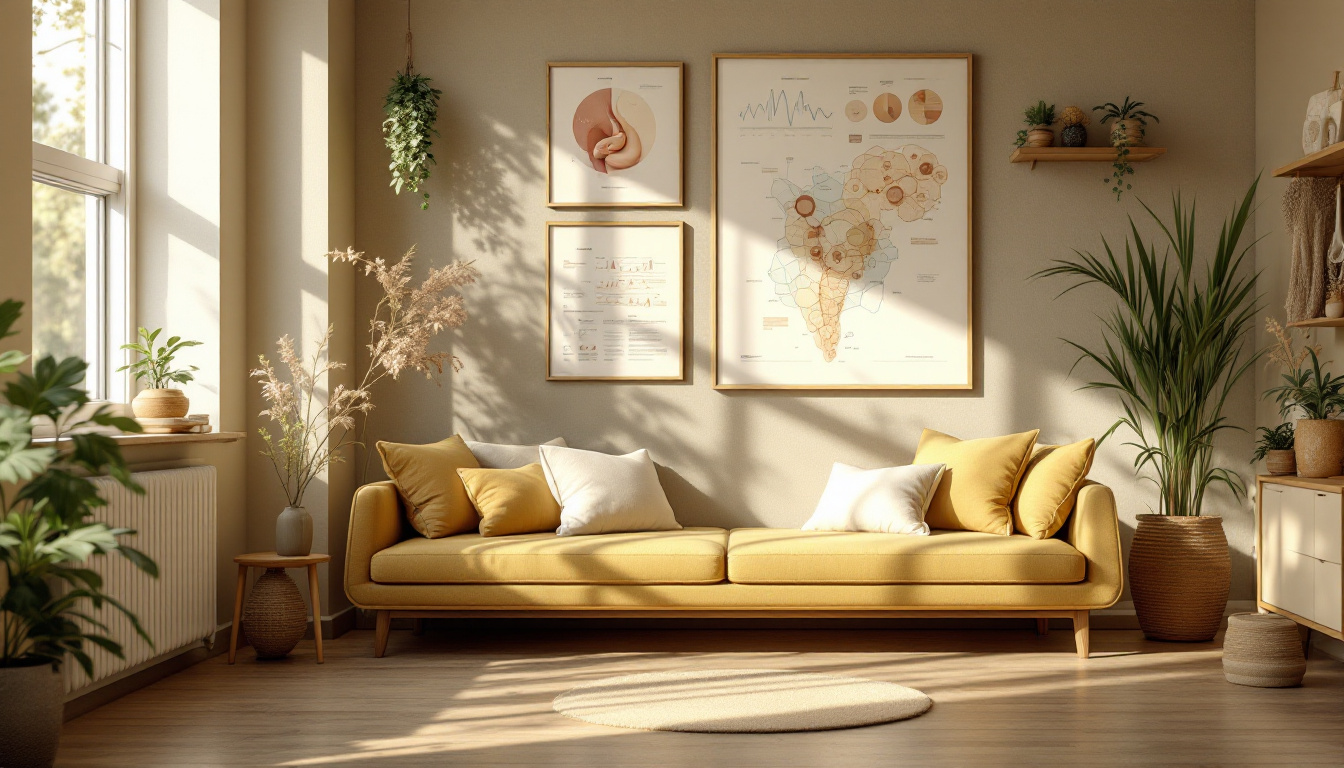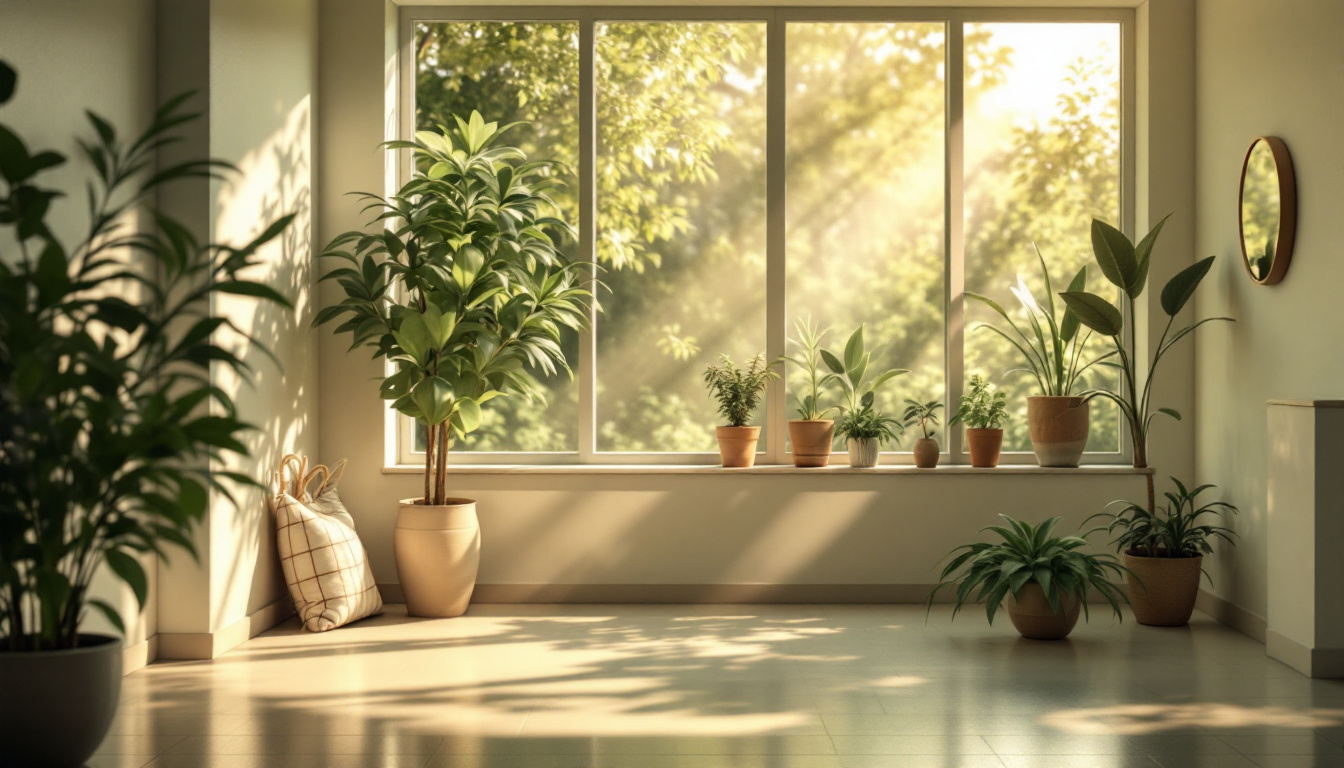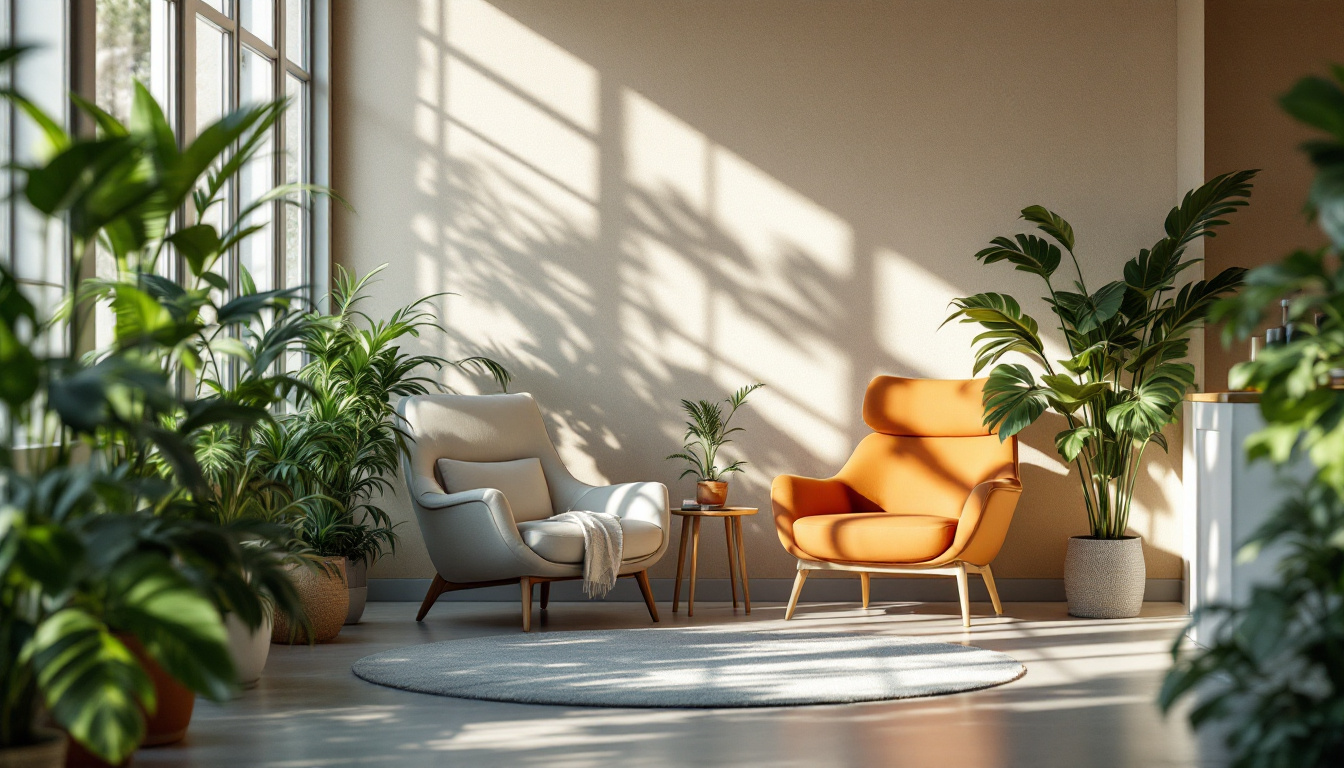How to Create a Serene Space for Meditation and Mindfulness
Creating a Meditation Sanctuary in Your Home

Introduction to Meditation Spaces
Meditation has emerged as an essential practice for our mental and emotional well-being. Creating a serene space for meditation and mindfulness at home can significantly enhance your practice, turning it into a peaceful retreat that promotes focus, relaxation, and spiritual growth. This article will provide insight into how you can design such a space, incorporating essential elements that cater to your personal style and environmental needs.
The Importance of a Dedicated Meditation Space

Why is it important to have a dedicated meditation space?
A dedicated meditation space is crucial for cultivating a calming environment that fosters relaxation. Choosing a quiet area in your home minimizes distractions, helping you transition into a meditative mindset. This space serves as a visual and emotional anchor for your mindfulness practice, establishing a consistent routine that reinforces your commitment to meditation.
The Environment Significance
Creating a serene environment can significantly enhance your meditation experience. Incorporating natural light, comfortable seating, and calming scents enriches the atmosphere, allowing for deeper focus and emotional balance. Elements like plants and soft lighting not only purify the air but also evoke a sense of tranquility during practices, making it easier to engage fully in meditation.
Mindfulness Commitment
Your meditation space symbolizes your dedication to mindfulness. Regularly using this space encourages a routine that supports emotional wellness, helping to manage stress and anxiety more effectively. Over time, the association between your designated area and meditative states can deepen, leading to improved focus and clarity during sessions.
Stress Reduction
A dedicated area for meditation can greatly aid in stress reduction. With a calm and organized environment, you can more easily let go of tension and distractions. The distinct separation from day-to-day chaos allows practitioners to cultivate a mind that is more resilient and capable of navigating life's stresses.
In summary, investing in a dedicated meditation space empowers you to prioritize your well-being, enhancing your ability to find peace and clarity amidst the busyness of daily life.
Creating Your Peaceful Meditation Space on a Budget

How can I create a meditation spot without breaking the bank?
Creating a meditation spot on a budget is entirely achievable with a little creativity and resourcefulness. Start by identifying an unused corner in your home that can be transformed into your personal retreat. Repurposing items is key—utilize cushions and blankets that you already have to create comfortable seating.
What affordable decor can enhance your meditation area?
Affordable decor can enhance the tranquility of your space significantly. Look for simple decorations such as:
- Soft colors: Choose calming palettes like soft blues or gentle greens.
- Personal touches: Incorporate items like inspiring quotes, family photos, or your own artwork to make the space feel uniquely yours.
- Natural elements: Adding houseplants or natural stones can contribute to a peaceful ambiance and connect you with nature without spending much.
DIY tips for a personalized meditation environment
Consider some DIY projects for further personalization:
- Create simple wall art or hang curtains that bring in soft light and privacy.
- Use materials like wood or bamboo to craft a minimalist aesthetic.
- Seasonal updates can be achieved simply by changing elements like flowers or cushions to reflect nature’s rhythms.
By focusing on comfort and simplicity, you can create an inviting meditation space that encourages regular practice and serves as a peaceful sanctuary.
Incorporating Natural Elements to Enhance Serenity

How can I incorporate natural elements into my meditation space?
To cultivate a peaceful meditation space, integrating natural elements can significantly enhance serenity. Start by incorporating a variety of plants, such as snake plants, peace lilies, or lavender. These not only beautify your space but can also purify the air, creating a healthier atmosphere. Opt for greenery that resonates with you and elevates your mood.
Next, consider using natural materials for decoration. Wooden furnishings or stone accents provide an earthy aesthetic that connects you to nature and fosters a sense of grounding. A minimalist approach can be particularly effective; choose items that serve a purpose and enhance the tranquil vibe of your meditation area.
Water features such as a small fountain or a reflecting pool can introduce calming sounds, enhancing focus during meditation. The gentle trickle of water creates a soothing backdrop that helps drown out distracting noise.
Make sure that your meditation space receives adequate natural light, ideally from east-facing windows for morning glow. This will brighten your space and elevate your mood. Complement natural light with soft, warm lighting in the evenings to maintain a comforting atmosphere.
Finally, keeping your space clean and uncluttered is essential. A tidy area allows for deeper engagement in meditation, promoting a clear mind and enhanced focus.
Essential Steps to Creating a Sacred Space for Meditation

What are the essential steps to create a sacred space for meditation?
Creating a sacred space for meditation involves several thoughtful steps aimed at promoting tranquility and focus.
Select a Quiet and Comfortable Spot
- Look for an area in your home with minimal traffic and noise, helping you to meditate without interruption.
- Ensure the space is comfortable, allowing for easy and relaxed seating on cushions or chairs.
Cleanse the Area
- A clean space is essential for clear thinking. Decluttering removes distractions, contributing to a clearer mind.
- Consider performing cleansing rituals with sacred elements such as Palo Santo or Sage to release any stagnant energy, ensuring the environment feels fresh and uplifting.
Personalize Your Decor
- Enhance the ambiance with meaningful decor that resonates with you:
- Crystals, known for their energetic properties, can be placed around your space.
- Plants, like lavender or sage, can purify the air and bring a sense of nature indoors.
- Inspirational Artwork serves as a focal point, guiding your meditation and helping cultivate peace.
- Enhance the ambiance with meaningful decor that resonates with you:
Comfort and Lighting
- Incorporate cushions or a meditation chair that is comfortable for long sit periods.
- Use soft lighting such as candles or LED lights to set a serene atmosphere, enhancing the meditation experience.
By following these steps, you can establish a peaceful sanctuary that encourages mindfulness and self-reflection in your daily practice.
Overcoming Design Challenges in Meditation Spaces

How do you overcome common challenges when designing a meditation area?
Creating a meditation space can be a rewarding endeavor, yet it often comes with its own set of challenges. Location selection is crucial; choose a quiet corner in your home, preferably away from the hustle and bustle of daily life. If possible, select a spot that benefits from natural light to enhance the serene atmosphere. For example, a room with east-facing windows can be ideal for morning meditation, while north-facing options provide consistent gentle illumination throughout the day.
What about soundproofing?
Next, consider soundproofing solutions. Incorporate soft textiles such as rugs, cushions, and curtains to absorb sound and reduce distractions. You might also use sound machines that emit calming nature sounds, like rain or ocean waves, to drown out any intrusive noise. As people in various environments can meditate, remember that even community centers or parks can serve as effective quiet spots.
How can I adjust the lighting?
Finally, adjusting the lighting is essential for creating a calming ambiance. Alongside natural light, consider using soft lamps like Himalayan salt lamps or battery-operated candles that offer a warm glow. This layered lighting approach helps create an inviting and peaceful environment, allowing your meditation sessions to flourish.
In essence, by thoughtfully selecting your meditation space’s location, sound management, and lighting, you can overcome common design challenges and build a sanctuary for tranquility and mindfulness.
The Psychological Benefits of a Serene Meditation Environment
What are the psychological benefits of having a serene environment for meditation?
A serene environment for meditation offers numerous psychological benefits. Primarily, it significantly reduces stress and anxiety, fostering a space that enhances focus and depth in meditation practices. When individuals meditate in tranquil settings, they often encounter profound emotional health improvements, including a better self-image and a more positive outlook on life.
In addition to these immediate benefits, a peaceful meditation space enhances self-awareness. This increased self-awareness leads to greater mental clarity and improved emotional regulation. Mindfulness meditation, often practiced in such serene surroundings, can strengthen attention spans while helping to diminish negative emotional reactivity, which is especially beneficial during challenging times.
Over time, these cumulative impacts contribute to an improved sense of overall well-being, enhancing not just mental health but also satisfaction in relationships. Individuals who engage regularly in mindfulness practices in calming settings often experience a deeper connection to their emotions, empowering them to navigate life's challenges with greater ease and resilience.
Additional Considerations
Creating a meditation space that nurtures these psychological benefits involves ensuring it is uncluttered, well-lit, and filled with elements like plants and calming scents. Incorporating personal touches can also help make the space a true sanctuary, encouraging frequent use and consistent practice, thus amplifying the inherent benefits of meditation.
Practical Design Tips for a Lasting Meditation Retreat
What are some practical tips for creating a peaceful meditation space?
To create a peaceful meditation space, start by choosing a small, dedicated area in your home that can be kept clean and uncluttered, which is essential for minimizing distractions.
Incorporate natural elements like plants and stones to promote harmony and balance. Low-maintenance indoor plants, such as snake plants or peace lilies, can enhance the tranquility of your meditation space while purifying the air. Consider using a neutral color palette with soft tones—whites, beiges, and greys—to create a soothing atmosphere that encourages relaxation.
Engaging all your senses will greatly enhance your meditation experience. Use essential oils like lavender or sandalwood to introduce calming scents. Additionally, incorporating soft sounds, such as nature sound machines or gentle music, can mask external distractions while promoting inner calm. Ambient lighting, perhaps with Himalayan salt lamps or candles, can help create a cozy and inviting atmosphere as well.
Personalize your meditation corner with meaningful objects like crystals, family photos, or inspirational quotes that resonate with you. This connection to your sanctuary reinforces the intention of the space as a refuge for relaxation and mindfulness. Define the purpose of your meditation space to guide your decor choices, ensuring it meets your needs for peace and focus.
Conclusion: Creating Your Own Meditation Haven
By thoughtfully designing a dedicated and serene space for meditation and mindfulness, you pave the way for a transformative practice that nurtures your mental and emotional well-being. From inexpensive DIY options to incorporating natural elements, there are numerous ways to create a meditative sanctuary that feels personal and inviting. As you establish this space, you're not only crafting an environment for reflection and relaxation, but also reinforcing a daily commitment to mindful living. Embrace the journey of creating your own meditation haven—an oasis of calm amid the hustle and bustle of everyday life.
References
- How to Create a Meditation Space - Lion's Roar
- Creating a Meditation Space at Home: Essentials and Inspiration
- How to create a meditation room: 6 ideas to DIY your space - Calm
- Everything You Need to Create the Perfect Meditation Space at Home
- How to Create a Meditation Space of Serenity
- How to Create a Zen Meditation Space at Home - Prime Storage
- How To Create a Mindful Space - Printique, An Adorama Company
- Creating an Outdoor Meditation Space: Design and Decor - Medium
































































































